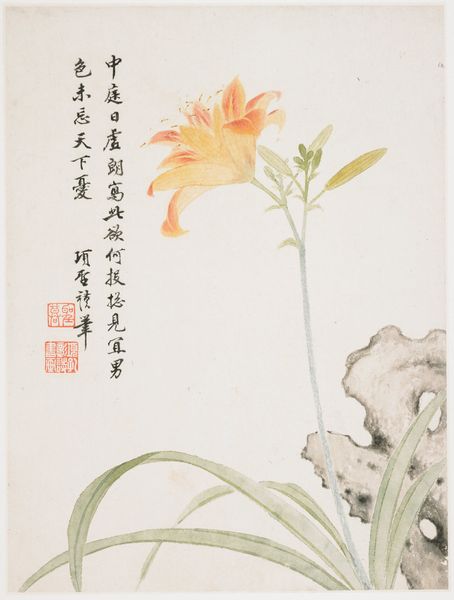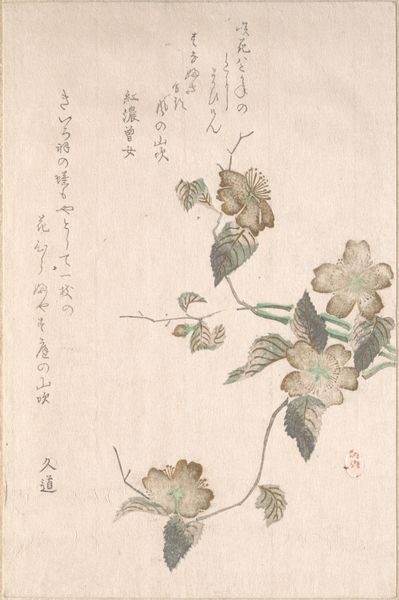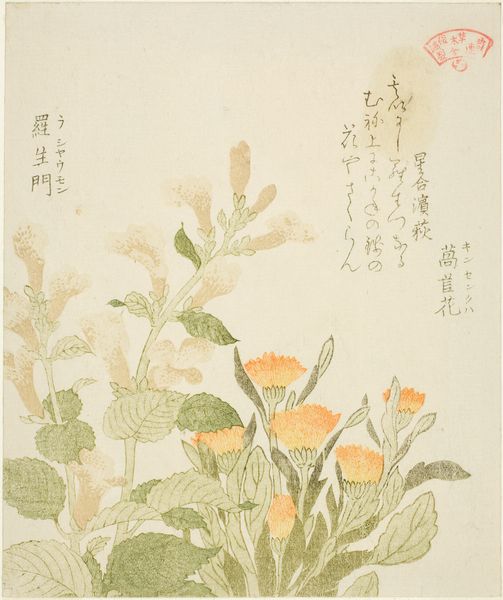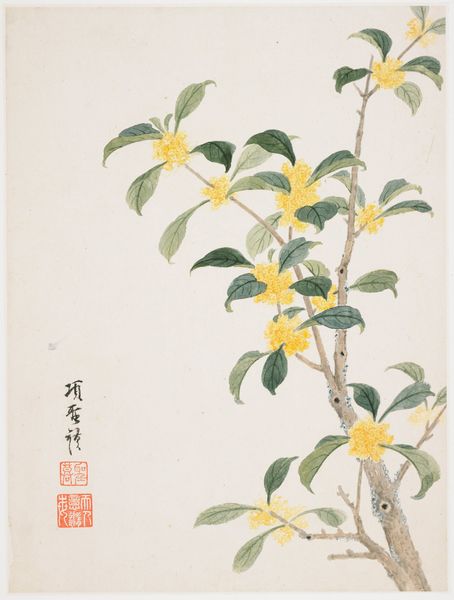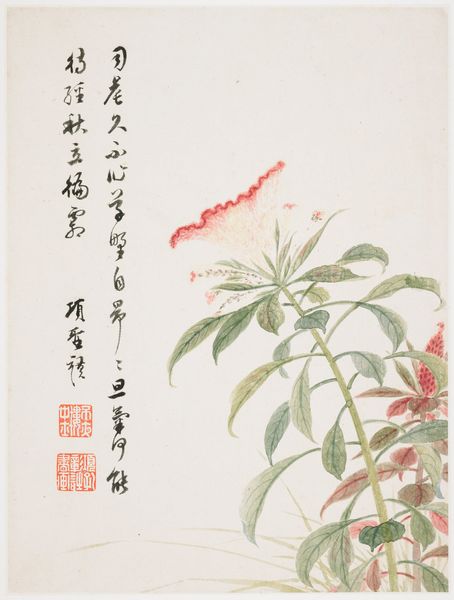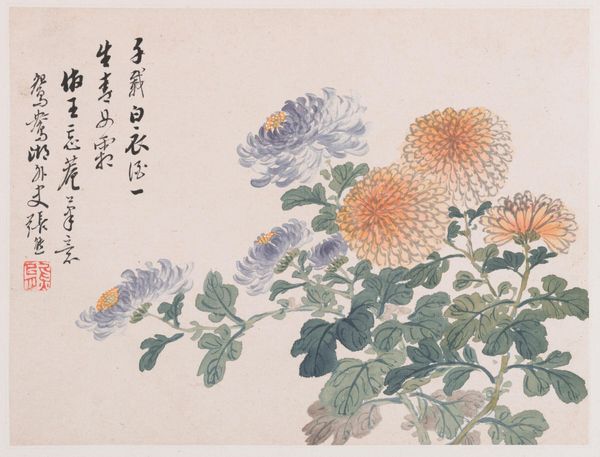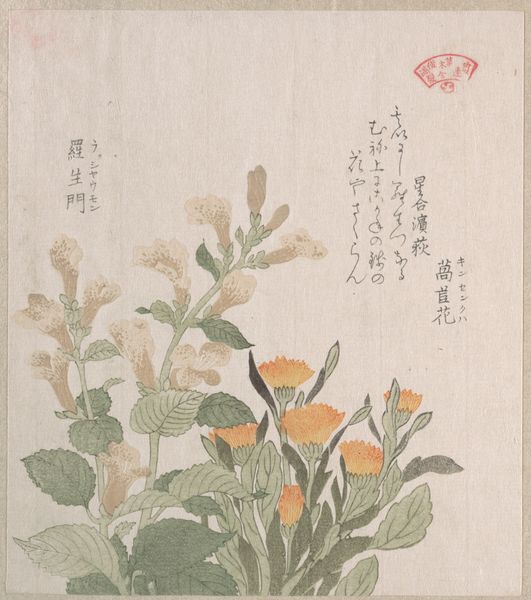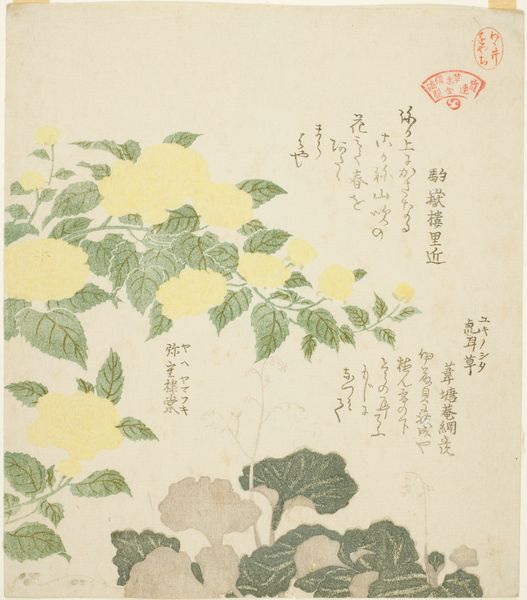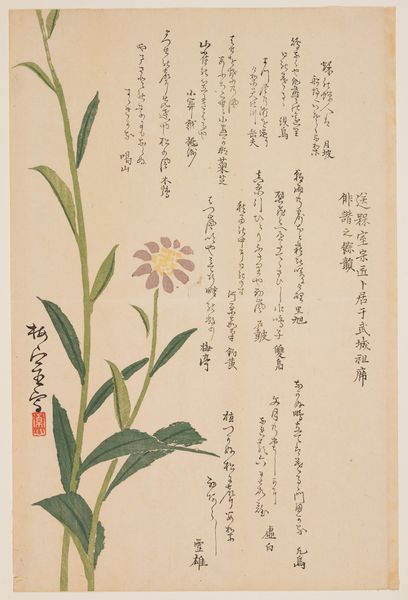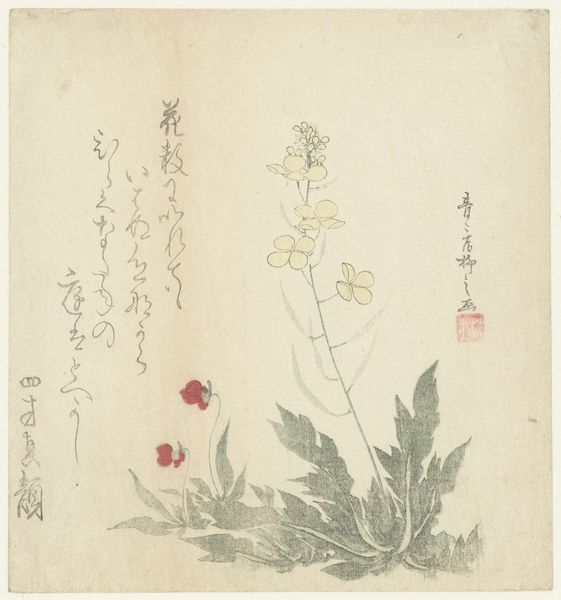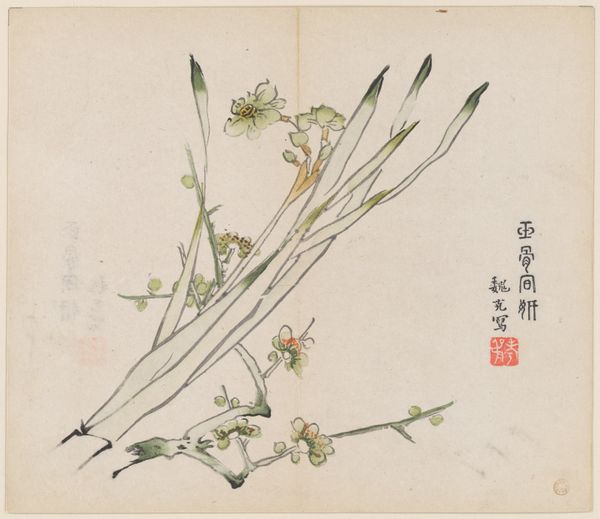
painting, paper, watercolor, ink
#
painting
#
asian-art
#
leaf
#
culinary art
#
paper
#
watercolor
#
ink
#
food illustration
#
orientalism
#
botanical art
#
watercolor
Dimensions: 12 1/8 x 9 1/16 in. (30.8 x 23 cm)
Copyright: Public Domain
Curator: This is "Hibiscus from a Flower Album of Ten Leaves" by Xiang Shengmo, created in 1656 using ink and watercolor on paper. The delicate rendering of the plant gives it such an airy and graceful quality, doesn't it? How do you respond to it? Editor: It definitely does! It's incredibly delicate, the almost translucent quality of the petals… It’s like looking at something ephemeral, almost frozen in time. What's particularly striking about this, beyond the beauty, is the obvious skill involved. Considering the socio-economic context of its creation, can we delve a bit deeper into how materials and labour intersect within this work? Curator: Absolutely. The use of ink and watercolor on paper itself tells a story of accessibility and skill. Unlike some luxury arts, these materials were comparatively common in 17th-century China. However, that belies the labour involved in creating the inks and pigments themselves. Sourcing, grinding, and mixing—all demanding specialized knowledge and significant time. Consider, too, the labour embedded in the paper production; its smoothness indicates skilled manufacturing processes. And doesn't the artist's control with these materials demonstrate a high level of learned technique? Editor: Yes, that precision definitely speaks volumes. It makes me consider the training and patronage system. How might Xiang Shengmo’s access to resources and specific training have shaped the artwork itself, in both style and perhaps in the subject matter he chose to depict? Curator: That's an incisive question. Aristocrats often commissioned artworks like this, and their wealth indirectly fueled the art world through purchase, instruction and validation of the work through cultural exchange. The subject matter, hibiscus, and the way it's depicted speaks to an interesting consumer element where botany and artistic tastes commingle within society, do you see what I mean? Editor: That’s such a helpful connection. It’s easy to get caught up in the aesthetic appreciation but much more enriching when understood within the sphere of social structure and labor. Curator: Exactly. By acknowledging how labour and resources influence creation, we obtain a much richer interpretation beyond just looking at technique. Editor: It completely reframes how I see not only this painting, but similar works too. Thanks!
Comments
minneapolisinstituteofart almost 2 years ago
⋮
Xiang Shengmo was born into one of the most prestigious families in Jiaxing, a city in northeastern China. When the Manchu invasion reached Jiaxing, in 1645, many of Xiang’s friends and relatives died in a vain attempt to save their city. His homestead was destroyed and his family’s art collections lost. Following this upheaval, Xiang’s painting changed from an amateur, literati pursuit, becoming a source of income. Xiang was at the height of his technical and expressive powers when he created this album, featuring a wide range of flowers including wintersweet, cockscomb, apricot, pear, daylily, and cassia. He worked here in pure color without ink outlines and in shaded brushstrokes, which give the impression of three-dimensional modeling.
Join the conversation
Join millions of artists and users on Artera today and experience the ultimate creative platform.
